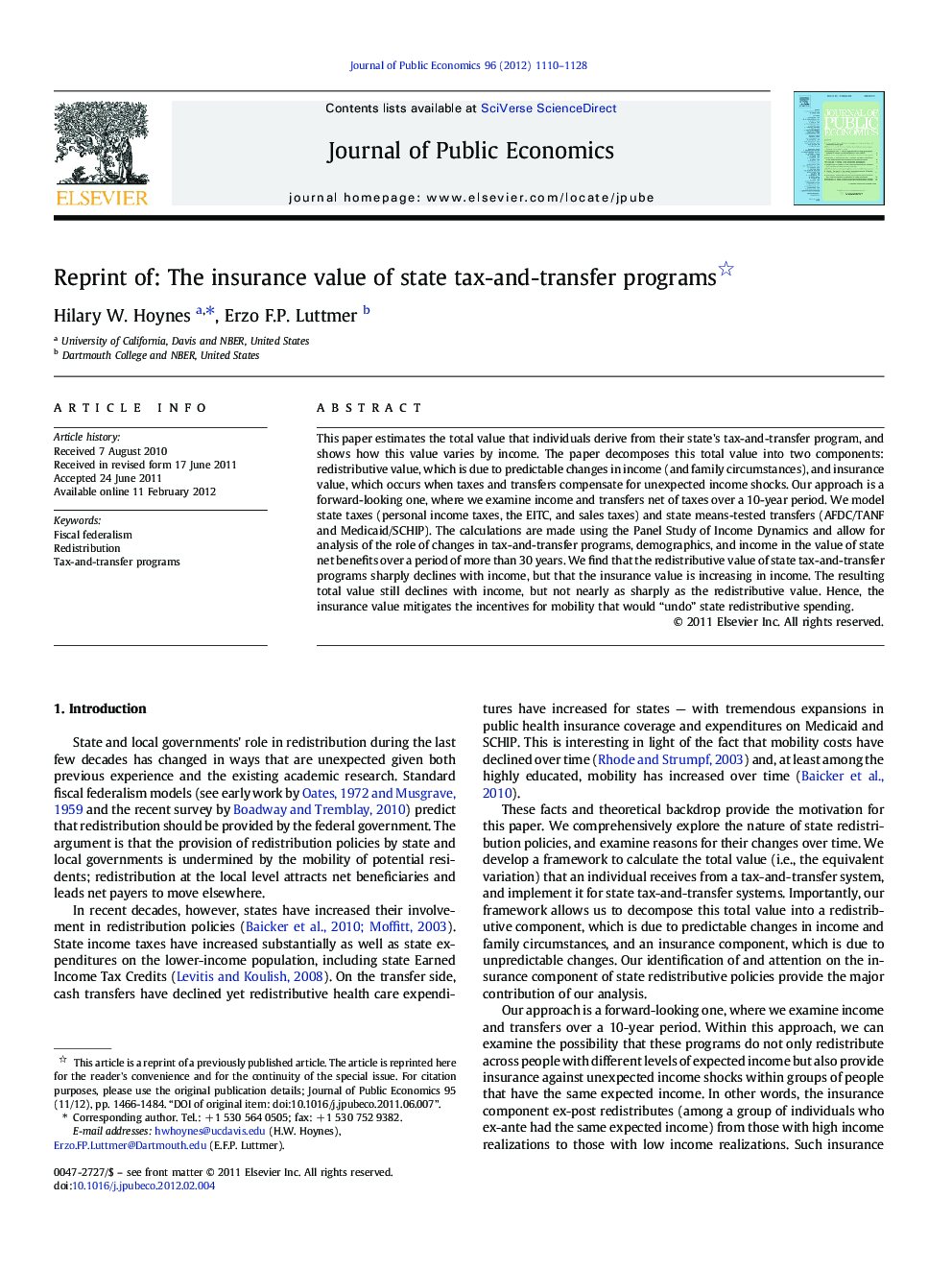| Article ID | Journal | Published Year | Pages | File Type |
|---|---|---|---|---|
| 969185 | Journal of Public Economics | 2012 | 19 Pages |
This paper estimates the total value that individuals derive from their state's tax-and-transfer program, and shows how this value varies by income. The paper decomposes this total value into two components: redistributive value, which is due to predictable changes in income (and family circumstances), and insurance value, which occurs when taxes and transfers compensate for unexpected income shocks. Our approach is a forward-looking one, where we examine income and transfers net of taxes over a 10-year period. We model state taxes (personal income taxes, the EITC, and sales taxes) and state means-tested transfers (AFDC/TANF and Medicaid/SCHIP). The calculations are made using the Panel Study of Income Dynamics and allow for analysis of the role of changes in tax-and-transfer programs, demographics, and income in the value of state net benefits over a period of more than 30 years. We find that the redistributive value of state tax-and-transfer programs sharply declines with income, but that the insurance value is increasing in income. The resulting total value still declines with income, but not nearly as sharply as the redistributive value. Hence, the insurance value mitigates the incentives for mobility that would “undo” state redistributive spending.
► Estimate the total value that individuals derive from their state's tax-and-transfer program. ► Decompose this total value into redistributive and insurance components. ► Redistributive value sharply declines with income, but insurance value is increasing in income. ► Total value still declines with income, but much less sharply than redistributive value. ► Hence, insurance value mitigates incentives for mobility to “undo” state redistributive spending.
